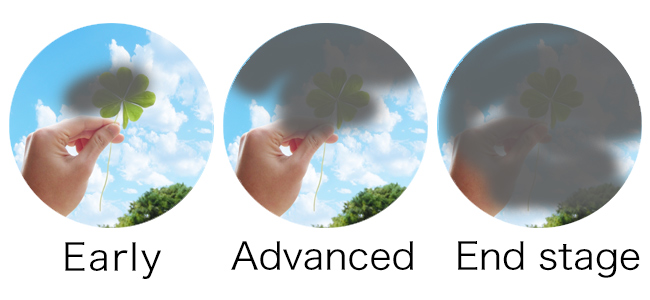The causes of glaucoma
This disease gradually destroys nerve because of pressure increasing in the eye and, the damages bring your visual field narrow. This disease can destroy vision at worst.
What is intraocular pressure?
One of the factors of this disease is intraocular pressure increasing. intraocular pressure is the pressure of aqueous humor. It might change the level depends on the season or time of day; the normal range is medically defined among 10-21mmHg.
What is Aqueous humor?
Aqueous humoris is a liquid that fills between anterior chamber (the cornea and the iris) and the posterior chamber (the iris and the lens) to provide nutrition to lens and cornea. It also keeps a pressure in the eye.
The water was produced by the ciliary body, normally drains into the front of the eye (anterior chamber) through tissue (trabecular meshwork) at the angle where the iris and cornea meet. However, when the water doesn’t flow properly, intraocular pressure will increase. How it stunts the water flowing in the eyes, this disease are categorized several types.
- Open-angle glaucoma
Open-angle glaucoma is the most common form of the disease. The drainage angle formed by the cornea and iris remains open, but the trabecular meshwork is partially blocked.
- Angle-closure glaucoma
Angle-closure glaucoma occurs when the iris bulges forward to narrow or block the drainage angle formed by the cornea and iris. As a result, fluid can't circulate through the eye and pressure increases.
Angle-closure glaucoma may occur suddenly (acute angle-closure glaucoma) or gradually (chronic angle-closure glaucoma). Acute angle glaucoma is a medical emergency. It can be triggered by sudden dilation of your pupils.
- Normal-tension glaucoma
In normal-tension glaucoma, your optic nerve has damaged even though your intraocular pressure is within the normal range. Especially 60% of Japanese patients are corresponding to this case. You may have a sensitive optic nerve, or you may have less blood being supplied to your optic nerve.
- Ocular hypertension
Ocular hypertension is a condition in which intraocular pressure is higher than normal range. In this condition, your optic nerve has neither damages nor visual field defect yet. However, it involves higher risk of glaucoma, it is important to take a periodic medical check-up.
Glaucoma symptoms
Glaucoma usually have no warning signs. The effect is so gradual that you may not notice a change in vision until the condition is at an advanced stage.
As an exemption, acute angle-closure glaucoma can cause severe eye pain, redness, blurred vision, and other symptoms such as headache and feeling of sickness due to sudden increase of eye pressure. (In this case, immediate treatment is needed.)
The vision with glaucoma

Types of glaucoma
- Open-angle glaucoma
The drainage angle formed by the cornea and iris remains open, but the trabecular meshwork is partially blocked.
- Angle-closure glaucoma
Angle-closure glaucoma occurs when the iris bulges forward to narrow or block the drainage angle formed by the cornea and iris. As a result, fluid can't circulate through the eye and pressure increases.
- Normal-tension glaucoma
In normal-tension glaucoma, your optic nerve has damaged even though your eye pressure is within the normal range.
- Secondary glaucoma
Secondary glaucoma occurs to the inflammation of the cornea or uveitis.
- Congenital glaucoma
The drainage angle formed by the cornea and iris has naturally had problem, develops in infancy.
- Developmental glaucoma
The drainage angle formed by the cornea and iris has naturally had problem, develops in adolescent growth.
- Steroid glaucoma
This type of glaucoma could occur to the side effect of steroid.
- Posner-Schlossman Syndrome
Posner-Schlossman is a disease typified by acute, unilateral, recurrent attacks of elevated eye pressure with mild anterior chamber inflammation.


 Glaucoma menu
Glaucoma menu


